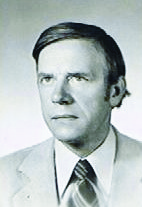Title of the work
Country of the First Edition
Country/countries of popularity
Original Language
First Edition Details
Franciszek Kobryńczuk, O słynnym śpiewaku Arionie. Web. Ewa Białek, n.d. http://www.ewa.bicom.pl/wierszedzieci/kob44.htm (accessed: September 21, 2022).
Available Onllne
O słynnym śpiewaku Arionie at ewa.bicom.pl (accessed: September 21, 2022).
Genre
Narrative poetry
Poetry
Target Audience
Children
Cover

We are still trying to obtain permission for posting the original cover.
Author of the Entry:
Maciej Skowera, University of Warsaw, mgskowera@uw.edu.pl
Peer-reviewer of the Entry:
Katarzyna Marciniak, University of Warsaw, kamar@al.uw.edu.pl
Elżbieta Olechowska, University of Warsaw, elzbieta.olechowska@gmail.com

Photograph courtesy of the Author.
Franciszek Kobryńczuk
, 1929 - 2016
(Author)
A veterinarian, professor of veterinary sciences specializing in animal anatomy (an authority on the anatomy of the Polish bison), writer, and poet. 1948–1950: a member of a secret youth organization active within the post-WW2 underground connected to Armia Krajowa [Home Army], banned by the Communist regime; in 1950 he was sentenced to a 10-year prison term for this activity; fully exonerated after the fall of Communism. Graduated from the Faculty of Veterinary Medicine of the Warsaw University of Life Sciences (SGGW); from 1994 to 2000 Head of the Department of Animal Anatomy at the same University. Debuted as an author for children in 1958 with a short poem Sowa [Owl], published in children’s magazine “Miś”; contributor to several other magazines for children and young adults, such as “Świerszczyk,” “Płomyk,” “Płomyczek,” and “Mały Apostoł”; author of about 30 books for children, young adults and adults; a former member of the Polish Writers’ Union; now his poems can be found most of all online. The page ewa.bicom.pl/wierszedzieci run by a Kobryńczuk’s admirer, Ewa Białek, functions as the official website for Kobryńczuk’s poems for children.
Source:
Materials kindly provided by the Author.
Bio prepared by Maciej Skowera, University of Warsaw, mgskowera@gmail.com
Summary
Based on: Katarzyna Marciniak, Elżbieta Olechowska, Joanna Kłos, Michał Kucharski (eds.), Polish Literature for Children & Young Adults Inspired by Classical Antiquity: A Catalogue (accessed: June 11, 2021), Faculty of “Artes Liberales”, Warsaw: University of Warsaw, 2013, 444 pp.
Poseidon and Ino had a son born on Lesbos who became a famous singer. His name was Arion. He travelled to Corinth where he found a patron in Periander, the city's tyrant. Later, Arion successfully competed in a musical competition in Sicily and, as a reward received many riches. On the way home, the crew of his ship decided to kill him and to divide his prize. Arion was saved by dolphins and returned to Corinth where Periander welcomed him with open arms. Later, the tyrant punished the sailors for their vile crime.
Analysis
The poem retells the ancient Greek story of Arion, the singer who was credited with inventing the dithyramb. Arion’s adventures were mentioned, i.a. by Herodotus in his Histories (1.23–24). Here, it is told in a manner typical of travel, adventure, or picaresque story. Not only is the figure of an exceptionally talented musician used, but there are also many twists and turns, dangers, a miraculous rescue by a dolphin, playing the role of deus ex machina, etc. Franciszek Kobryńczuk, wishing to present the extraordinary talents of the young artist, utilises one of his favorite artistic means, namely enumeration. For example, in the passages: “Mighty and simple people, men and women, children, old ones, and infants”* cry at the sound of the lyre; “to the feet of Arion, the generous people make gifts: whole clusters of expensive pearls, necklaces and thalers, spikes, brooches, colored belts, golden vases, silver bowls, candelabras, and satins, and cups, and goblets, scepters, helmets of mighty lords, golden wheels for chariots, and a golden throne, and a crown from the emperor for Arion.” This reinforces the image of Arion as a special musician whose playing eludes ordinary human judgments; therefore, the transfer of his lyre as a constellation to the sky, described at the poem’s end, appears justified.
* All quotations translated by Maciej Skowera.
Further Reading
Entry: “Arion (Areion)” on theoi.com (accessed September 13, 2022).
Nosek, Anna, W przestrzeniach universum i regio. Wiersze dla dzieci współczesnych pisarzy regionu podlaskiego – interpretacje [In the Spaces of universum and regio: Poems for Children by Contemporary Writers of the Podlasie Region – Interpretations], Białystok: Wydawnictwo Uniwersytetu w Białymstoku, 2015.
"Nota biograficzna", in: Franciszek Kobryńczuk, Złote jajko [A Golden Egg], Sterdyń: Towarzystwo Miłośników Ziemi Sterdyńskiej, 2012, 34–35.


